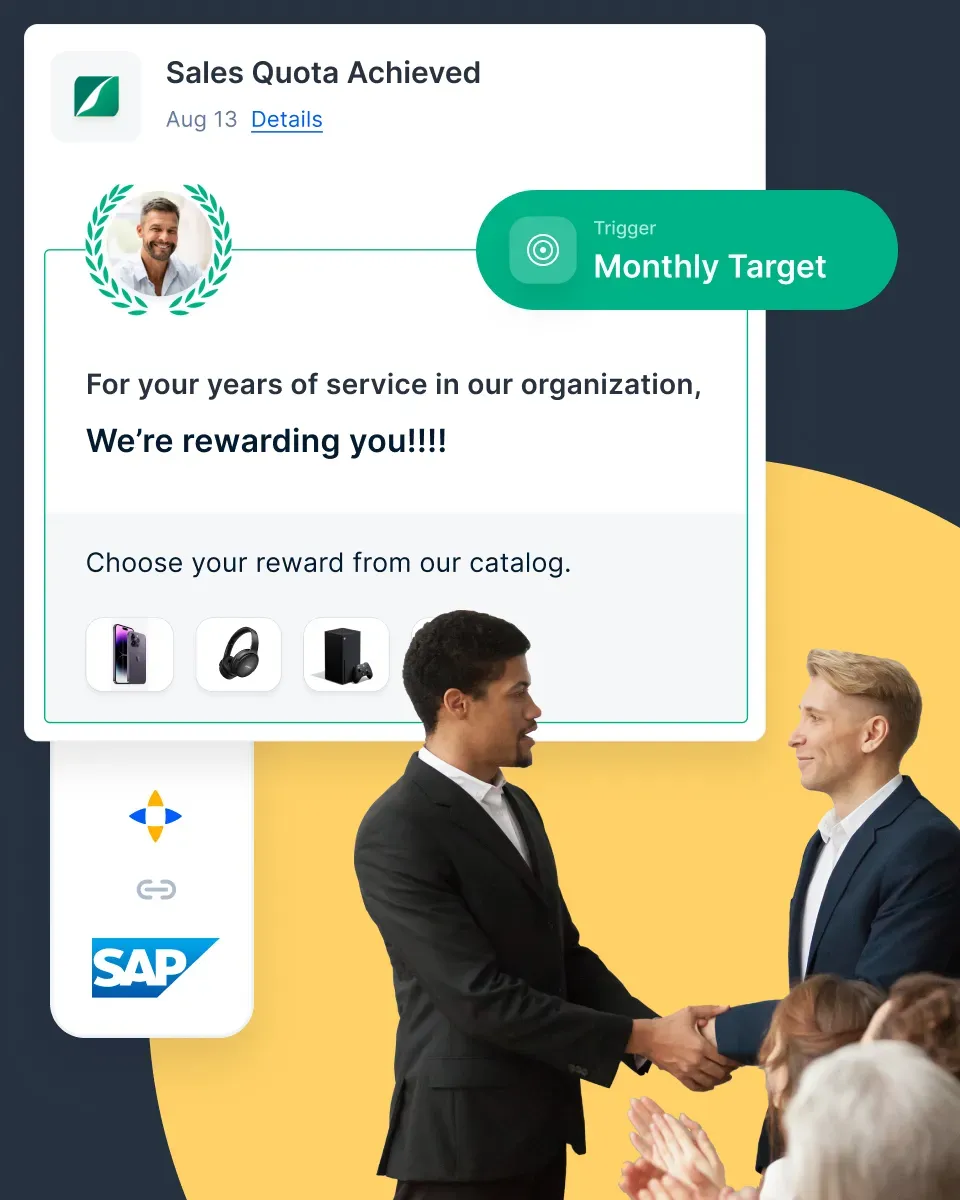11 أحدث اتجاهات الاحتفاظ بالموظفين: ما الذي يبقي الموظفين في عام 2025؟
Discover the latest employee retention trends for 2025, from flexible work models to AI-driven engagement, and learn how companies keep top talent committed.
في هذه الصفحة
Gone are the days when a steady paycheck and an annual bonus were enough to keep employees loyal. Today’s workforce expects more than just financial rewards—they want flexibility, career growth, recognition, and a workplace that truly values their contributions. Companies that fail to meet these expectations risk high turnover, disengaged teams, and increased hiring costs.
With talent shortages and shifting workplace dynamics, businesses are rethinking their approach to employee retention. Organizations now focus on employee experience, well-being, and purpose-driven work cultures rather than just traditional perks.
From four-day workweeks and AI-powered engagement tools to personalized benefits and stronger DEI initiatives, companies are making bold moves to keep employees motivated and committed long-term.
So, what’s working, and what’s outdated? Let’s explore the latest employee retention trends shaping workplaces in 2025.
11 Latest employee retention trends in 2025
تتنبأ اتجاهات الاحتفاظ بالموظفين بمستقبل العمل - الأنماط المتوقعة التي تؤثر على كيفية حفاظ أصحاب العمل على القوى العاملة لديهم ، وتعزيز الولاء ، وزيادة القدرة التنافسية.
1. فرص التعلم والتطوير
A workplace survey says that more learning opportunities can cause 94% of employees to stay longer at a company.
هل تريد الاستفادة من اتجاه التعلم والتطوير (L&D) هذا؟ ابدأ بالتركيز على واحدة من أهم خطوات التوظيف: عملية الإعداد. لقد ثبت أنه يشجع على طول عمر الموظف (لمدة تصل إلى ثلاث سنوات!).
خلق بيئة تعليمية مستمرة من خلال تقديم منصات التعلم الرقمي والتدريب المتبادل وبرامج الإرشاد. إذا كنت ترغب في اتباع نهج أكثر إثارة ومتعة ، فيمكنك تنظيم ورش عمل تطوير مجانية أو الدفع مقابل مؤتمرات الصناعة خارج المدينة.
يمكن لهذه الوظائف البسيطة تمكين الموظفين في مساراتهم المهنية ، مما يجعلهم أكثر تقديرا ومكافأة. يمكن للشركة ذات التعلم والتطوير المبسط الاحتفاظ بقوة عاملة أكثر تحفيزا ومهارة عالية.
2. مساعدة الموظفين في الرفاهية
With work-related stress affecting 80% of the workforce, it’s about time all companies start to recognize the overall well-being of their employees. The Chartered Institute of Personnel and Development outlines these crucial areas:
- الصحة: هذا لا يتعلق فقط بالصحة البدنية. الصحة العقلية حيوية بنفس القدر. يمكن للمبادرات واللوائح التي تعترف بقضايا الصحة العقلية أن تحدث فرقا كبيرا.
- Good work: Setting an appropriate reward system—which we have a detailed guide for—goes a long way here. Good line management and a suitable physical working environment create an environment where productivity thrives.
- القيم: إن التمسك بقيم الشركة وتعزيزها يشجع على مواءمة الموظفين ومشاركتهم.
- الاحتياجات الاجتماعية: من الضروري إعطاء الموظفين صوتا وتعزيز العلاقات الإيجابية داخل الفريق لتحسين الرضا الوظيفي بشكل عام.
- النمو الشخصي: تنفيذ خطة التحسين المستمر يقلل من فرص دوران الموظفين على مدى فترات قصيرة.
- نمط الحياه: يمكن أن تكون برامج النظام الغذائي والنشاط البدني جوهر هذا العامل. تشمل بعض الأمثلة على الجهود نوادي الوصفات ، والخيارات الصحية في الكافتيريا ، وغيرها من المنظمات ذات الصلة بالتمرين.
- الرفاهية المالية: إن تقديم تعويضات تنافسية وإرشادات بشأن إدارة التمويل الشخصي يعزز الأمن المالي.
يمكن أن تكون معالجة مجالات الاهتمام هذه إنجازا كبيرا لأي شركة. ولكن يمكنك أن تبدأ صغيرا ، بهدف أولا مبادرات الصحة العقلية ، ونظام المكافآت المعمول به ، والجمع بين الشمولية والتنوع في مكان العمل.
3. يجب أن يكون العمل عن بعد والمختلط هو التركيز المركزي
تؤكد العديد من الدراسات العلاقة بين إعدادات العمل المختلطة وتحسين التوازن بين العمل والحياة بين الموظفين - وهو مزيج يعتقد قادة الموارد البشرية أنه المحرك الرئيسي للاحتفاظ بهم.
يدرك المزيد والمزيد من الأشخاص الإعدادات البعيدة والمرنة ويفضلونها ، ويجب على الشركات اتباع هذا الاتجاه. وقد تترتب على ترتيبات العمل هذه انتكاسات، بما في ذلك:
- أعطال الاتصالات
- انخفاض مشاركة الفريق
- صعوبة تتبع إنتاجية الموظفين
- إدارة مناطق زمنية مختلفة
ومع ذلك ، يمكنك التغلب على تحديات الإعدادات المرنة والبعيدة من خلال بناء سياسة تحدد بوضوح مكان وزمان عمل الموظفين. وبالطبع ، الاستفادة من استخدام التكنولوجيا.
In the US, 74% of companies have already adopted this work model, with approximately 59% of employees preferring to work in such companies, according to Zippia.
See our guide for remote work to learn in detail the techniques and tools you can use to foster better hybrid arrangements.
4. AI-powered employee engagement
Artificial intelligence is transforming how businesses interact with employees. AI-driven platforms provide personalized learning experiences, automate repetitive HR tasks, and analyze employee sentiment in real time. By leveraging AI, companies can identify disengagement early and implement targeted retention strategies, making employees feel more valued and heard.
With real-time feedback loops and intelligent engagement analytics, platforms like Empuls help businesses build a thriving, motivated workforce while reducing attrition.
5. A skills-based approach to hiring
في حين أن العديد من الاتجاهات ستتغير بمرور الوقت ، إلا أن أحدها يظل فعالا.
تتحول العديد من الشركات من أساليب التوظيف التقليدية التي تركز على الدرجات العلمية والخبرات السابقة إلى نهج أكثر اعتمادا على المهارات. وهذا بدوره يمكن أن يزيد أيضا من التنوع داخل فرقهم.
حول تركيزك إلى تقييم قدرات وإمكانات محددة أثناء عملية التوظيف ؛ التدريب يمكن أن يسد أي ثغرات في وقت لاحق. يمكن أن يؤدي هذا النهج إلى قوة عاملة ذات مهارات عالية ، وسيشعر موظفوك الجدد بمزيد من التقدير والتقدير لقدراتهم ومساهماتهم الفريدة.
You can even apply your skills-based approach to the existing workforce. In that case, you can further refine data-driven employee retention strategies and identify who requires upskilling or reskilling. It gives you a more proactive technique to drive employee satisfaction, professional growth, and retention.
In turn, according to TestGorilla, 92.5% of companies that use this approach to hiring have reduced the rates at which they hire the wrong candidates.
6. Personalized rewards and recognition programs
A customized approach to rewards and recognition significantly boosts employee engagement. 72% of employees who experience outstanding recognition say their organization commonly acknowledges "little things."
هؤلاء الأفراد هم أكثر عرضة للمشاركة 20 مرة من أولئك الذين يحصلون على اعتراف منخفض الجودة.
لذلك ، تجنب اتباع نهج واحد يناسب الجميع. يجب أن يكون التقدير مصمما بناء على الفرد والجيل والصناعة ، مما يضمن مكافأة الناس والاعتراف بهم بشكل فعال لمساهماتهم وأدوارهم الفريدة.
7. Diversity, equity, and inclusion (DEI)
A majority of U.S. workers acknowledge the benefits of emphasizing DEI. Yet, a Pew Research study reveals prevalent biases, with many believing that being a man or White offers job advantages.
تتطلب مواجهة هذه المعتقدات المتأصلة نهجا شاملا ل DEI يعزز الإنصاف ، ويعترف بنقاط القوة المتنوعة ، ويقاوم بنشاط التحيزات الجنسانية والعرقية لتعزيز بيئة عمل عادلة وشاملة.
8. Flexible benefits and perks package
There may be limited current data regarding the number of employees prioritizing benefits over salary, but there's clarity on what perks employees value most. Here are the top three and the corresponding population prioritizing them:
- فوائد الرعاية الصحية (89٪)
- خطط التقاعد التي تضمن الأمن المالي (81٪)
- امتيازات الإجازات، وتعزيز التوازن بين العمل والحياة (81٪)
9. Revolution of AI to enhance the employee experience
AI is projected to revolutionize the US labor market, with anticipated boosts in overall productivity growth by 1.5% in the next decade.
في الوقت نفسه ، فإن سوق التكنولوجيا الذكاء الاصطناعي في اتجاه تصاعدي ، ومن المتوقع أن تصل إلى قيمة مذهلة تبلغ تريليون دولار بحلول عام 2028. إنه يعمل بالفعل على تحويل أماكن العمل بعدة طرق:
- أتمتة المهام المتكررة: يمكن لهذه التقنية تبسيط المهام الروتينية وتوفير الوقت لواجبات أكثر تعقيدا.
- تدريب الموظفين وتطويرهم: يمكن لأنظمة التعلم التي تعمل بنظام الذكاء الاصطناعي تكييف التدريب وفقا للاحتياجات الفردية ، وبالتالي تحسين اكتساب مهارات الموظفين.
- Talent acquisition: AI can speed recruitment by screening resumes and predicting candidate success.
- Employee engagement: Chatbots respond immediately to inquiries, enhancing satisfaction and engagement.
10. Four-day workweek trials
The traditional five-day workweek is re-evaluated as more companies experiment with four-day workweeks without reducing pay. Research shows that a shorter workweek enhances productivity, reduces burnout, and improves job satisfaction.
Companies that adopt this model find that employees are more engaged, less stressed, and more likely to stay long-term. While not all industries can implement this fully, flexible scheduling and compressed workweeks are increasingly popular retention strategies.
11. Boomerang employees
Rehiring former employees—often called boomerang employees—is becoming a bright retention trend. Many professionals leave a company only to return later when they recognize its growth potential, culture, or improved benefits.
Organizations that maintain positive relationships with departing employees through alumni networks or open-door policies have a higher chance of welcoming back experienced talent. This reduces hiring costs and onboarding time, benefiting both the company and the returning employee.
Driving employee retention with meaningful engagement

Employee retention is not just about competitive salaries but about creating a workplace where employees feel valued, connected, and motivated to stay. Organizations must focus on recognition, rewards, and engagement with shifting employee retention trends to build long-term commitment.
This is where Empuls makes a difference. As an all-in-one employee engagement platform, Empuls helps businesses foster a culture of appreciation, motivation, and collaboration, ensuring employees stay engaged and committed.
✅ Seamless rewards and recognition: Celebrate contributions, milestones, and achievements with personalized rewards that motivate employees.
✅ Data-driven employee feedback: Use real-time surveys and sentiment analysis to understand workplace engagement and take proactive retention measures.
✅ Stronger team connections: Enhance workplace relationships with a social intranet, where employees can collaborate, celebrate, and engage effortlessly.
✅ Wellness and financial benefits: Offer tailored benefits like tax-free fringe benefits, wellness programs, and exclusive discounts to improve employee satisfaction.
✅ Continuous engagement and motivation: Automate appreciation, recognize employees consistently and create a positive work culture that drives long-term retention.
Retaining top talent requires more than just perks—it demands a work environment where employees feel heard, appreciated, and motivated. Empuls equips businesses with the tools to build a workplace where employees choose to stay, contribute, and thrive.
أفكار أخيرة
Employee retention isn’t just about keeping people on the payroll—it’s about creating an environment where employees want to stay. The latest trends show a clear shift towards flexibility, career growth, well-being, and meaningful work. Companies prioritizing these elements will build a more engaged, loyal, and high-performing workforce.
Ignoring these changes, on the other hand, could lead to higher turnover, disengaged teams, and talent shortages. Businesses that listen to employees, adapt to evolving expectations, and invest in workplace culture will be the ones that thrive in 2025 and beyond.
Retention isn’t a one-time effort—it’s an ongoing strategy. The question is, is your organization ready to evolve?













